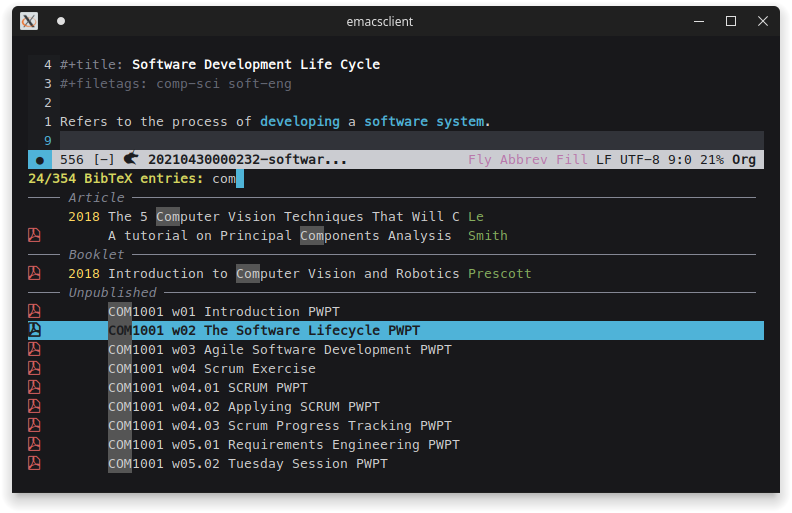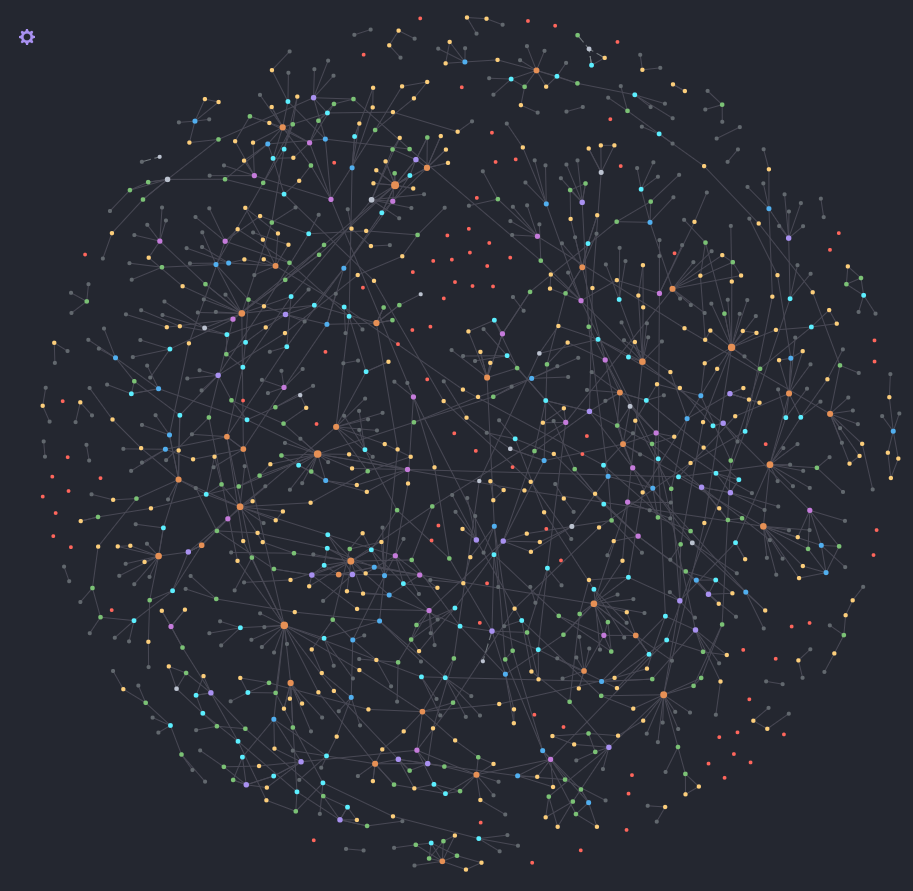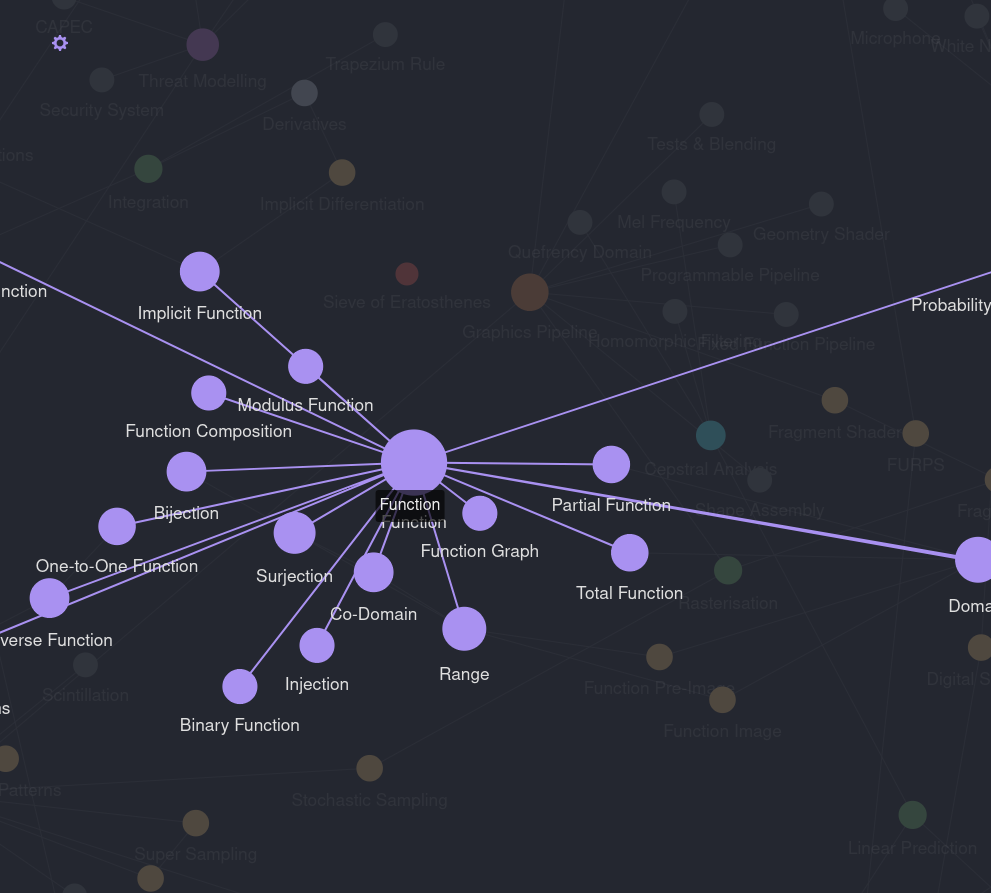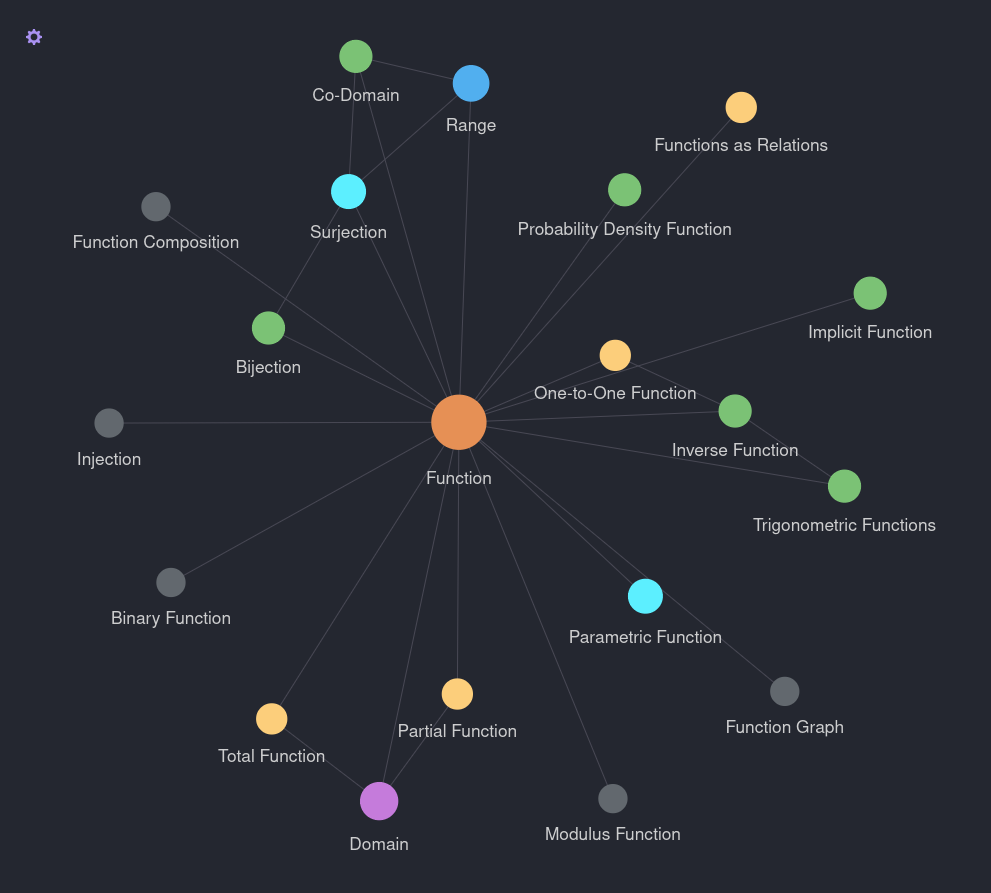
Well, it's been quite a while since my last post. Almost 7 months by my count |−・;). I'll try to explain this absence in an upcoming post looking back on my time at university however I think it's about time to update the little robots who scrape this blog with what I've been up to: My Personal Brain Dump.
#The Motivation
Near the start of my last year at university I increasingly started to realise the impracticality of how I took and reviewed notes. My previous process was to write everything down, by hand, on paper; truly, I'm a Neanderthal (ノ ̄ー ̄)ノ. In actuality I had a pretty sophisticated workflow, I timestamped each lecture and organised by module code. Everything was placed in a single folder but arranged in such a way that I could easily find or add new entries. It wasn't perfect but it's what I had been using most of my life so I'd grown accustomed to it. However this approach had flaws, pretty apparent ones.
- Carrying around all my notes with me everywhere I went quickly became impractical as the amount of content I had to learn or review increased. At one point I felt like I was carrying bricks worth of paper to-and-from lectures.
- There's no way to associate notes to lectures or slides. The most I could do was pad the margin of the pages with references to which PowerPoint or slide I should goto to expand on a certain note.
- My notes weren't index-able or searchable.
For the love of god I'm a computer nerd, how could I accept being unable to
grepsomething so valuable ヽ(●-`Д´-)ノ. - Lastly, and most glaringly, I'm awful at keeping track of my notes after I've written them.
An issue that became increasingly apparent to me as I moved from college to university was how much of what I had learnt had faded over time. For example in my first year at college I had learnt so much about differentiation, integration and other maths fundamentals. However by my first year at university (2 years later) after I hadn't applied any of that knowledge for so long I found that I had all but forgotten it. Beyond a vague recollection I would have to actually seek out and review my notes to truly remember what I had learnt. This became a common theme by the third year as well when I was learning high level mathematics related to machine learning and adaptive intelligence. In the end I saw first-hand how wasteful it was to not properly archive and have convenient access to the notes I so painstakingly developed.
I suppose the main lesson here was:
Knowledge that isn't applied, fades. Knowledge that is forgotten was never truly learnt.
This was my main motivation for what would eventually become my brain-dump.
#A Prospective Solution: org-mode
So I needed a digital note-taking system. There were a few prospective options. I had seen some people using markdown or vimwiki to relative success. Some more mathematically inclined souls chose latex+vim coming up with jaw-droppingly efficient workflows for note-taking. However personally I'm not a big fan of how restrictive latex feels for regular typing, so I would've preferred markdown. Markdown on the other hand is quite sparse on features and while I could probably come up with something usable by extending the ordinary syntax I eventually found something far more usable.
Emacs org-mode. Being over 14 years old and evolving with the editor
itself I soon found it to be the only acceptable choice for my note-taking system.
The greatest advantage of org-mode for this was its versatility. You could embed
latex fragments directly into regular text and export directly through to HTML,
PDF, and a plethora of other targets. You can interlink between files, headings or
even manual (as in man man) pages as you saw fit.

A look at how I view my BibTex database.
Using org-mode also introduced me to the standards for writing scientific papers, which made organising my sources and notes even easier. I started including lecture PDFs and other shared documents in my BibTex database. For those who haven't encountered it before BibTex is a standard for maintaining plain-text bibliography's that's most commonly used with latex but can also be used with org-mode. For example here's a BibTex entry pointing to a book by Roger Pressman and Bruce Maxim.
@Book{14roger-software-engineering,
author = {Roger S. Pressman, Bruce Maxim},
title = "Software Engineering: A Practitioner's Approach, 8th ed.",
publisher = "McGraw-Hill,",
year = 2014,
desc = "Recommended reading for COM2008 (ch. 2-6)"
}I created similar entries for every lecture PowerPoint or extra material shared with
me for a university course. You can partially automate this by using
org-capture for populating BibTex entries or if you're referencing a
published work you could use its unique DOI number to automatically generate a BibTex
entry for it (courtesy of the org-ref package).
When I want to open a BibTex entries PDF I run M-x consult-bibtex (bound
to SPC o b in my configuration) to open the UI shown in the image above,
use embark-act to open the PDF (bound to C-RET o) instead of running the
default action. In my case the default action when you select a BibTex entry is to
insert a clickable link to a specific slide in that entries PDF.
#org-roam For the Win
At the start I was just simply creating org-mode files in a notes directory, one for each module.
However eventually I started wanting higher level control over my notes. This involved having headings for specific topics or sections, instead of just lectures, and being able to tag different notes to make filtering between them easier. It was at this point I was introduced to the Zettelkasten note taking system by one Jethro Kuan. The idea of having small, well designed, notes all linking to each other to provide structure was novel to me. The ability to branch from one note to the next, or thereafter made reinforcing specific topics and learning the relations between them so much simpler. Not only did Jethro introduce me to this amazing note taking system but he also pioneered the approach for incorporating it into org-mode through org-roam.
Now org-roam recently went through a major version change and with that there have been some deprecation's. One thing you may notice in the image above is that some of the back links don't have any titles (such as quotient remainder theorem having one but others missing them). You may also notice the headings and links in the org-roam buffer aren't clickable. Part of that is the fault of me using evil with org-roam and others is simply bugs in org-roam itself. But that should be fixed quite soon and personally I don't use the org-roam buffer much so I'm not as bothered by it.

A look at my brain in its entirety.
If I don't use the org-roam buffer how do I navigate between notes you ask?
With org-roam-ui.
This is a recently new and improved web based interface for org-roam that lets you
see all your org-roam notes and the connections between them from a single browser
tab. You can hover over a node and org-roam-ui will highlight that node and all its
neighbours. You can also click on a node and org-roam-ui will hide all the other
nodes that aren't directly connected to the selected node allowing you to focus on a
specific topic or related set of topics. If you have EmacsClient setup you can open
nodes directly in Emacs through org-roam-ui by just selecting a node and with M-x
org-roam-ui-follow-mode whenever you open a new node in your emacs instance
org-roam-ui will automatically narrow to it and its neighbours.
 |  |
|---|---|
| Highlighting the local node network. | Narrowing to just a single node (and its neighbours). |
#My Brain Dump
To finish this post let me direct you once again to my brain-dump.
Taking inspiration from a few other sources, and heavy advantage of the excellent ox-hugo package, I export all of my org-roam notes to markdown and render them onto this blog. This process is automated through my build-pipeline and since my notes are maintained in a separate repository, my brain-dump is rebuilt at least once a day, bringing in any new notes are changes simultaneously. I'll document the actual process for setting this up on a Gitlab pages site in a later post but for now I advise anyone whose interested to take a look. Goodbye and thanks for reading \(^O^)/.